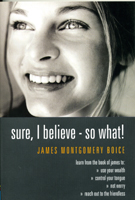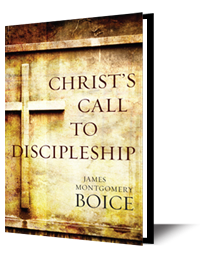
The second miracle that took place when Jesus died was the tearing of the great veil that separated the Holy Place from the Most Holy Place in the temple. Matthew, Mark and Luke all report the tearing of the veil. But Matthew and Mark add that it was torn “from top to bottom" (Matthew 27:51; Mark 15:38), suggesting that this was something God did and that it was heavy with spiritual significance.

We are coming to the end of Matthew, and this means that we are finding ourselves face-to-face with the core doctrines of Christianity. That is particularly the case in this and the next two studies, which cover Matthew 27:45-28:15.

All the gospels tell about Jesus' crucifixion. It is the chief point of their narratives. But each has its own emphasis, and the mocking of Jesus seems to be the dominant note in Matthew. There are thirteen verses in the paragraphs we are studying, but five of them are about the taunts the passersby and the leaders had for Jesus. The last verse even adds that the robbers “also heaped insults on him” (v. 44).

That is the straightforward account. But this is where we have to stop and go back over it in our minds imagination, remembering that this is what Jesus did for us. We can hardly imagine it, and the gospel writers do not describe it in detail, as I have said. But perhaps we can think of a lacerated body bleeding from head to foot, his form so marred that he is hardly recognizable, even to his friends. No representation of Jesus' crucifixion that I have ever seen, even by the greatest of artists, does justice to this horror. They are all too clean, too sterile. This was bloody and vulgar, ugly and repulsive. Yet this was the Son of God! Think of that and try to understand something of the horror of your sin and of the grace, love, mercy, and compassion of our God.

Yesterday we looked at the first of six details Matthew gives about Jesus’ crucifixion. Today we’ll look at the remaining five.
2. Gambling for Christ’s clothes (v. 35). Each of the gospels reports how the soldiers divided Christ’s clothing, though John alone explains that the gambling was actually only for Christ’s seamless outer robe, John is also the only one who says specifically that this was to fulfill Psalm 22:18, which says, “They divide my garments among them and cast lots for my clothing” (see John 19:24).


















